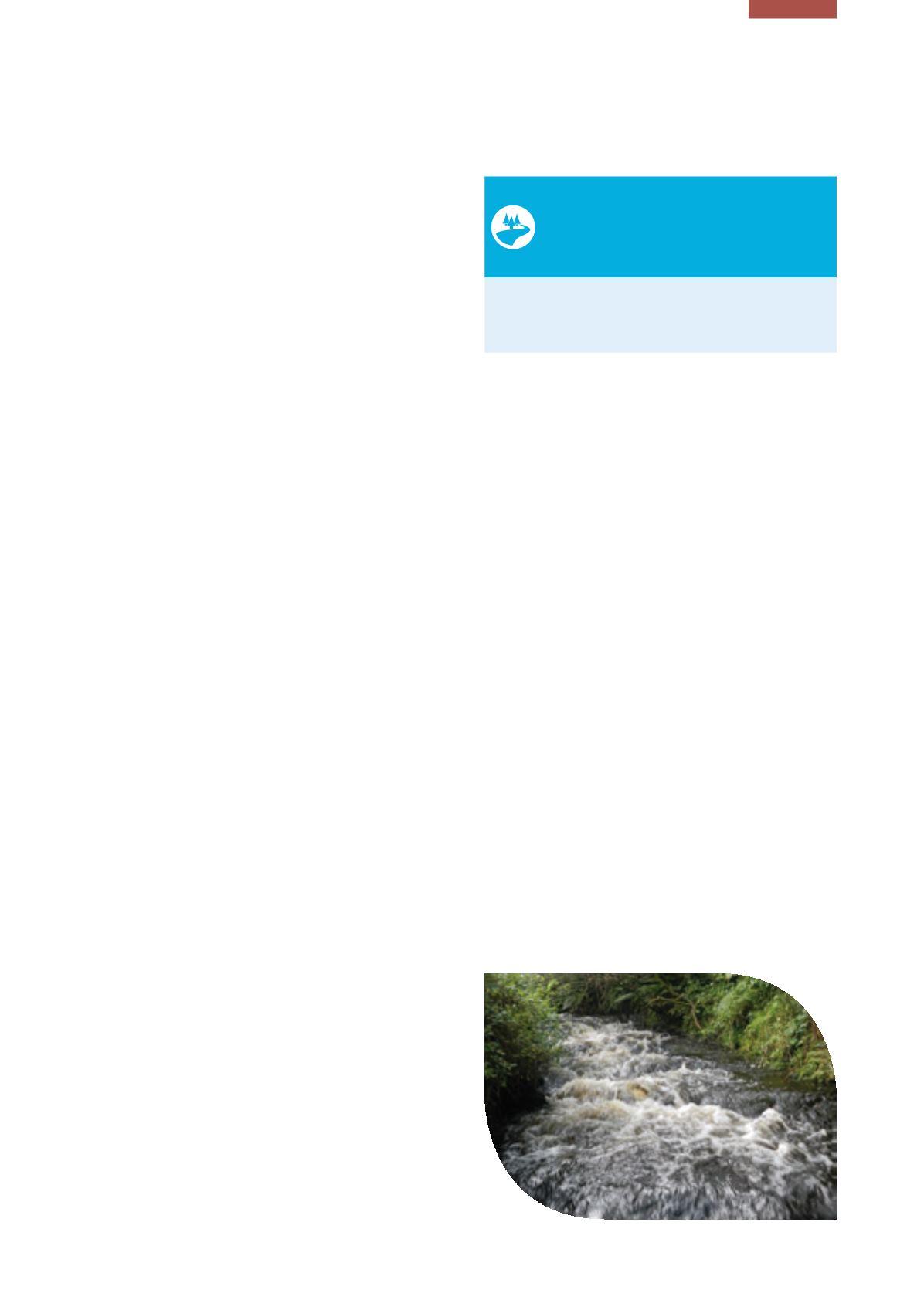

217
Chapter 13: Environmental Challenges and Emerging Issues for Ireland
Understanding and Dealing with Wider
Environmental Risks
We need to develop new ways of understanding and
dealing with emerging and systemic risks that take
the precautionary principle into account.
Many specific environmental issues are regulated on a site
by site basis, for example the licensing of an industrial facility
or the management of a protected area. However, across
the wider environment there are also systemic risks, such as
diffuse water pollution or decline in species populations. We
need to develop new approaches to be able to tackle these
risks effectively. The EEA and recent EU research point towards
the need to learn new ways to identify emerging risks (EEA,
2013; EU, 2016). The provision of timely environmental data is
crucial to the early identification of these wider risks.
Mapping and Understanding our Land Use
Patterns
Good planning decisions are those that are
integrated and also provide for a better environment.
The challenge is to design a future urban environment
with public appeal that incorporates climate-proofing
aspects, along with green areas and wild spaces for
wildlife and people, while also meeting the needs of
the population. Forward strategic planning for land use
and new infrastructure is needed to ensure that growth
is sustainable and does not add to the environmental
pressures that are already evident, such as the gradual loss
of wetlands over the past two decades or capacity issues in
delivering drinking water and treating urban waste water.
Land is subject to many often competing sectoral demands.
National policies, such as in forestry, agriculture, peatlands
and the built environment, influence land use change and
resource management. Establishing and implementing
an integrated national land cover, land use and habitat
mapping programme is essential to assist in reporting and
assessing the impact of different land cover and land use
types on the environment. By integrating the National
Landscape Strategy into land use planning, sustainable
landscape management practices can also be progressed.
A National Catchment-Based Flood Risk Assessment
and Management (CFRAM) Programme is under way to
assess the existing flood risk of inland watercourses and
coastlines in Ireland. The CFRAM Programme co-ordinated
by the Office of Public Works is a programme where active
participation and consultation with local communities
should lead to better outcomes to tackle flooding while
minimising impacts on the wider environment. The
programme should link work between directives, for
example between the Water Framework Directive and
the Floods Directive, in order to achieve the co-ordinated
protection of water resources.
Key Action 4:
Restore and Protect
Water Quality
Implement Measures that Achieve Ongoing
Improvement in the Environmental Status of
Water Bodies from Source to the Sea
New Approaches Needed to Protect Water
Quality
Protecting and improving our waters will present
significant challenges in the future.
Water protection measures are needed to ensure that
we continue to have healthy rivers, lakes and estuaries
and clean beaches in order to protect human health, to
preserve fish and biodiversity and to allow our important
water resources to be a driver for sustainable jobs and
tourism. While Ireland’s waters might be among the best in
Europe, we are still a long way from meeting the full legal
requirements of the Water Framework Directive, against
which water quality is measured. Preliminary results
indicate that there has been no overall improvement in
water quality over the first river basin cycle (2009–2015).
The target of a 13.6% improvement in the ecological
status of surface waters (from the 2009 baseline) by
2015 was not achieved. Water quality improvements
are required at approximately 50% of rivers, lakes and
estuaries that are impacted by pollution or other pressures
(EPA, 2015b). The two main suspected causes of pollution
in rivers are agriculture and municipal sources, accounting
for 53% and 34% of cases, respectively (EPA, 2015b).
Physical modifications, such as barriers to fish migration,
are also a key pressure that needs to be tackled.
While overall the length of unpolluted river channel has
remained relatively constant there has been a substantial
loss in the highest quality river sites (i.e. Q value of 5). In
the most recent monitoring period (2013‑2015) only 21
sites were classified as the highest quality river sites (0.7%


















